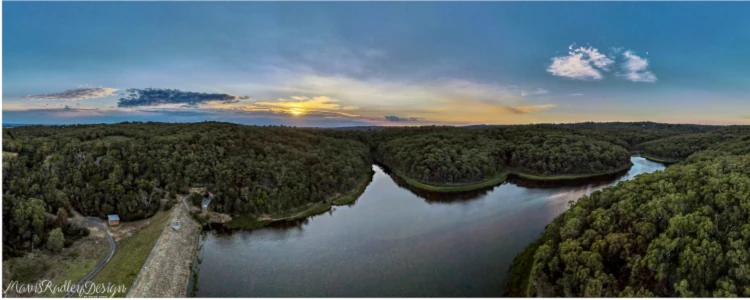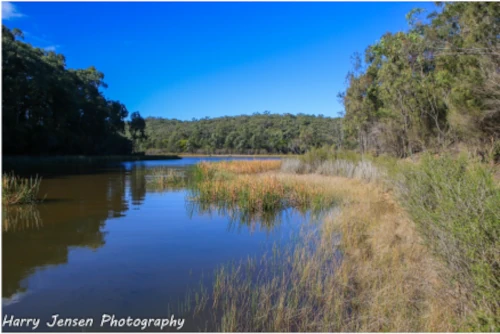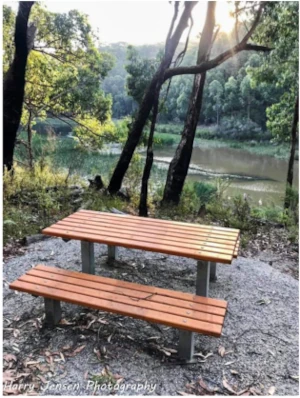Those who lived locally before the firestorm which engulfed Upper Beaconsfield (UB), Beaconsfield, Officer, etc in February 1983, will recall the aftermath – the loss of life, homes, property, animals and local infrastructure, etc. Loss of life did not touch everyone’s family or home, but much was destroyed leaving behind a smouldering blackened landscape to all points of the compass. Livestock, haysheds, fences, pasture all gone. No birds or wildlife. It took many days to bury the dead and swollen livestock. Very stark and sombre viewing on rural properties, with some families having to face even greater tragedies. Such an event is etched into your soul never to be removed. In many cases it took over a decade for things to get back to anywhere near normal.

Over the past 41 years the bush has returned bigger and more confronting than in 1983. The regrowth and “leaf area” has increased significantly. Horizons that were clearly visible prior to Ash Wednesday are now blocked from view. Many new residents and their families have moved into local estates. The number of children attending schools is testament to that. After the “experience”, original residents moved out of the area to safer locations. New arrivals to UB will not have experienced the wrath and aftermath of a firestorm such as Ash Wednesday and by God’s grace, we hope they never do. However, the chances of a reoccurrence of such an event, are considered greater than ever, because we are simply not prepared for it as we should be.
![]()
In the areas of South Belgrave and Upper Beaconsfield some 92 square kms were burnt, 21 fatalities and 238 homes destroyed not to mention various local infrastructure like the Pinegrove Hotel, Shops, the Church, etc. In Cockatoo 6 lives and 307 homes were lost. Among the lives lost were a notable number of brave and heroic volunteer CFA and CFS firefighters. We honour them whenever possible similar to the ANZACS. Those that died on Ash Wednesday, locally, but also those who died in SA and elsewhere on that fateful day need to be remembered by preparing the communities here and elsewhere for the next firestorm. There have been several hot summers since 1983 and we have been stunningly lucky not to have suffered a repeat of Ash Wednesday, although we have had some close moments. The legacy that was left by those who died was that we the survivors should do whatever it takes to defend, protect and survive.
Were you aware that the water supply in Upper Beaconsfield failed on Ash Wednesday, because the power supply was cut by the fire or the electricity supplier? At the most crucial moment there was no water. The loss of power could happen again in the next firestorm. Since then, Melbourne Water (MW) has upgraded the pumping arrangements to the water tower in U B and we hope that town water supply will be maintained during an event. But we need more to protect us.
This area has been described as one of the worst fire zones in Australia. The speed and ferocity of the flames on Ash Wednesday, aided by abundant fuels due to a lack of necessary fuel reduction by Cool Burning, and a landscape immersed in smoke, made fire suppression and containment impossible (at ground level). Couple that with a failed town water supply. We are told repeatedly that we are not to expect the CFA to attend our properties. They might, but there is not even a semblance of a guarantee. We each have to take responsibility for how we protect ourselves, our families, our properties. Not a comforting scenario. But now there is a gamechanger in all of this. CFA Firefighting Helicopters. Victoria has some 60 fire- bombing aircraft in its firefighting fleet spread around the State. It’s an impressive defence force. Forty years ago, not many helicopters were operating apart from the occasional police helicopter with a loudspeaker urging residents to immediately vacate from their homes. Back then, there were a few helicopters to bomb the fire from above with the ability to deliver thousands of litres of water in one pass. These aircraft can refill from water bodies in a few minutes.

Beaconsfield Reservoir is the nearest water body with a huge capacity closest to our communities of UB, Beaconsfield, Officer, and Pakenham West, but MW is hell bent on destroying it. Take a moment to think about that. The very public asset that can change how all of our communities cope with a wildfire is being destroyed by a Government Authority that arrogantly has no interest in protecting our communities from a repeat of Ash Wednesday. On March 4, 2024, Melbourne Water informed us that it would start draining the reservoir’s water which will continue for another 3 years! When the draining has been completed, MW will begin to bulldoze 8 metres of the wall, leaving very little of the original reservoir which supplied HMAS Cerberus Naval Base and formed a 100 Km aqueduct line which supplied our region and Mornington Peninsula. MW is moving ahead by dropping the water level in the reservoir from a 525 megalitre capacity down to a mere 90. (Full Supply Level was 912 megalitres). At the Decommissioned Supply Level of 525 megalitres, several helicopters can draw water from the reservoir at the same time. Queuing is likely unnecessary, but not so at 90 megalitres. MW has stated that it prefers CFA helicopters to source water from Cardinia Reservoir, which it points out is only a few minutes away to the north of the UB CBD. But just think about that for a minute. If fire is travelling at 50 Kms per hour, it is essential to draw water from the closest source to save water refilling time and save houses. Minutes are incredibly important, but seconds are even more so. A large part of UB township, the whole area to the south of Salisbury Rd – Leppitt Rd to Beaconsfield township, Pakenham West, Officer and communities are clearly better protected by retaining Beaconsfield Reservoir at the 525 megalitre level. The time lost for an aircraft travelling to Cardinia Reservoir to get water to fight a fire front in O’Neil Rd, Browns Rd, or Dickie Rd, which are the boundary of the Beaconsfield Reservoir, is a complete and utter nonsense.
![]()
Another important factor is that Cardinia Reservoir is really water storage for Melbourne’s potable drinking water, whereas Beaconsfield Reservoir is not. The pollution caused by an aircraft accident in Cardinia dam spilling surfactant and dye must be taken into account. A pollution incident in the Beaconsfield Reservoir won’t affect Melbourne’s drinking water. In effect, MW is all but removing the very asset that offers a realistic hope of saving lives, properties assets and local infrastructure – the schools, shops, hotels, Kinders, Halls, the Community Centres, aged care communities, Fuels stations, Churches, etc. The demise of the reservoir by MW is based on a barely transparent cost cutting factor. However, MW is claiming its justification is based on safety concerning the reservoir wall. This premise has been challenged by an eminently qualified Large Dam Engineer, Robert Evans (Dip. Civil Engineering 1968, Member Institute Engineers Australia, Past Secretary the Australian National Committee on Large Dams – ANCOLD, Senior Engineer Hydraulic Structures – Snowy Mountains Engineering Corporation, Retired). He has joined the “Save the Beaconsfield Reservoir Action Group” Committee. Our 1,650 members are on Facebook. MW’s original decommissioned reduction in water level from 912 megalitres to 525 megalitres has all but mitigated the 1 in 1,000,000-year risk of the reservoir wall collapsing. MW’s preferred option has more to do with cost and maintenance issues. The Officer and District Community, which is most subject to any risk of wall collapse, has never been formally consulted about the matter which should question MW’s unprofessional attitude towards community consultation. MW’s claimed risk is insignificant when compared to the huge risk from another Ash Wednesday bushfire. MW has a responsibility to protect life and property, but now it is not only destroying our reservoir, it is putting in jeopardy the entire surrounding area. To date, it has shown an unwillingness to do any more than consider what is in its best interest, rather than what is best for the public. To a greater or lesser degree MW is not alone.

![]()
The position of Cardinia Council, Emma Vulin MP representing Pakenham Electorate, the entire Pakenham CFA Group, the former UB Association, DEECA, and the former managers of BNCR – the Cardinia Environment Coalition, have done little or nothing to protect the Beaconsfield Reservoir from demolition. The State Government has supported MW’s decision, so this has become political, but what is political about wanting to better protect local communities from another Ash Wednesday, when another El Nino summer can occur again at some stage. With the increased risk from climate change causing future droughts and bushfires as well as other perspectives at play, it is exceptionally irresponsible that these groups appear content to let MW do what it wants. When so much is at risk to the public, that particular attitude is completely unacceptable. To avoid a future charge of “culpability”, all parties involved must support the retention of the 525 megalitre water level. Those who govern or represent us, have a moral (if not “mandatory”) obligation to protect all who live within this fire prone area of Cardinia Shire, especially given the Ash Wednesday experience which brought death and destruction. By preserving the Reservoir water level at 525 megalitres we bolster our defences by enabling fire-fighting aircraft to draw water from it. Cardinia Council promotes the “Active places”, and “Open Spaces Strategy” The Active places project encourages residents to be physically active in their community. A walk guide sets out 10 motivating walks in various parts of the Shire. The Cardinia Shire Open Space Strategy 2023–2033 provides a framework for Cardinia Shire Council to plan, deliver and maintain open space to create a network of enticing, inclusive, well connected, sustainable and equitable open space, that meets the current and future needs of our community. The reservoir presents a unique opportunity (maybe the most unique) for residents to have a new walking trail through the reserve and “around” the reservoir. What could be more desirable? Cardinia Council should be more strongly supporting saving Beaconsfield Reservoir from MW’s determined, unconsulted action.
The photos show the total disregard for saving this significant environmental area which was until this year, a thriving area of biodiversity that supported a healthy wetland and bushland environment. Now this environment, and the safety of local residents, in the event of a bush fire impacting our area, is being put at serious risk and safety. We urge all who are willing to speak in favour of preserving the current Beaconsfield Reservoir wall and water level at 525 megalitres. We need to do so with gusto and conviction to convince those in power, and to demand a reversal of the current course of action by MW. There is no time to lose. The campaign to save Beaconsfield Reservoir is urgently needed to support public enjoyment in both Cardinia and Casey. Our committee has written to the Environment Minister and DEECA, asking for the appointment of another Manager to BNCR, such as Parks Victoria, to allow public access to this enormous public park of 417 acres with Beaconsfield Reservoir at its centre. The reservoir lake was previously covering 17 acres, and would have allowed fishing, canoeing, swimming, picnicking, Botanical research for school groups, bush walking, and photography. It is also a vital water sanctuary for migratory water birds flying from the coast to inland waters.
Please sign our paper Petition in Upper Beaconsfield at Up the Hill Bakery, the Post Office and the Foodworks Supermarket, or in Beaconsfield at the Post Office, and Middle Ground Café. In Berwick at Physiofit and the Akoonah Park Mens Shed, and in Officer at the Saddlery in Tivendale Rd, and Officer Recreation Reserve Tennis Club and Sports Rooms. Alternatively, an e-Petition is available: www.parliament.vic.gov.au/get-involved/petitions/ public-access-to-beaconsfield-reservoir/
Harry Jensen, President
Andre Bokos, Vice-President
Editor’s note: The Save the Beaconsfield Reservoir Action Group is an independent community group and are not affiliated with the Beaconsfield Progress Association.
![]()